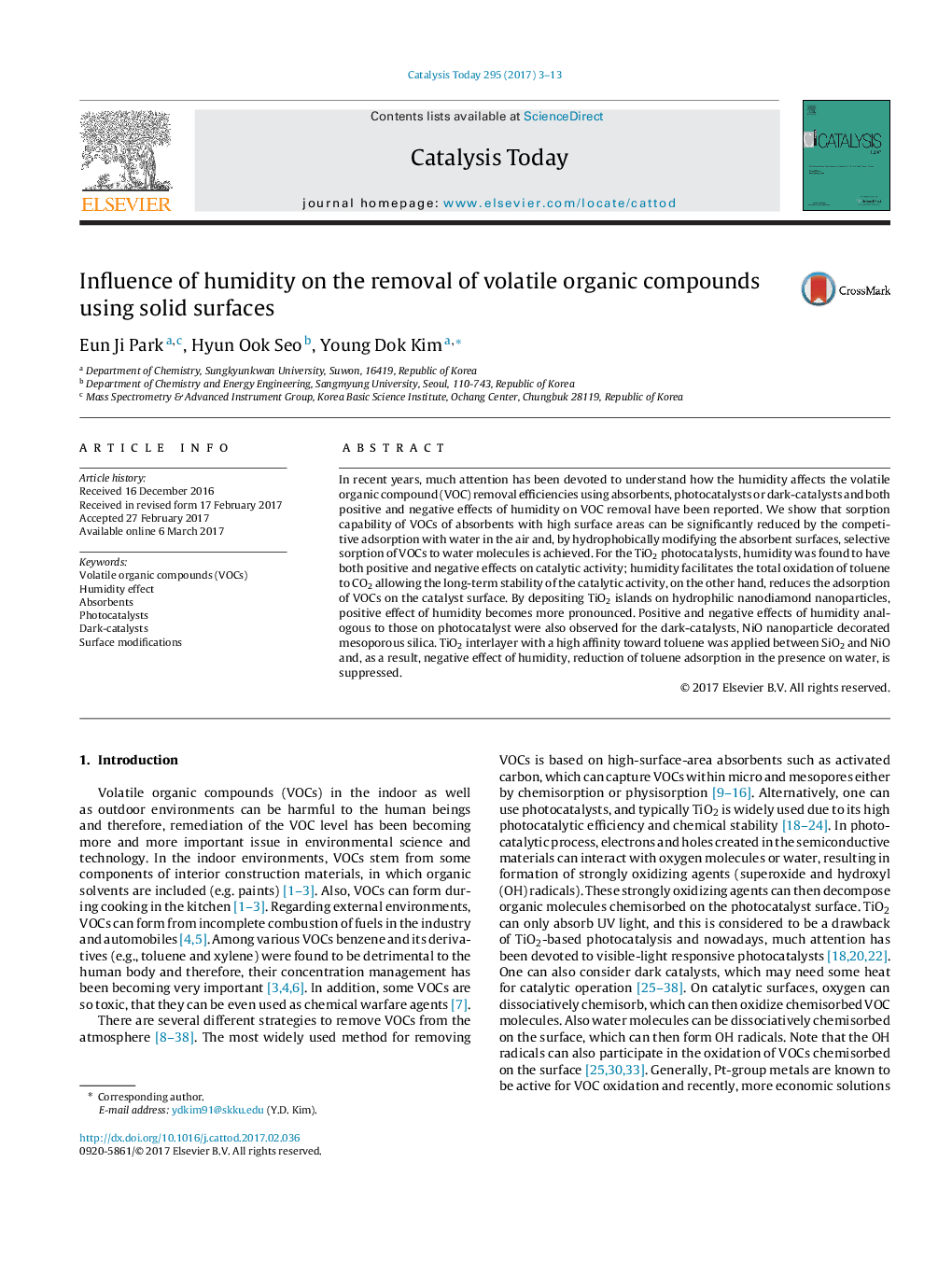| Article ID | Journal | Published Year | Pages | File Type |
|---|---|---|---|---|
| 6455210 | Catalysis Today | 2017 | 11 Pages |
â¢Effect of humidity on volatile organic compound (VOC) removal was reported.â¢Adsorption of VOCs was suppressed by the competitive adsorption with water molecule.â¢On catalysts, both positive and negative effects of water on VOC removal were found.â¢Water can facilitate the total oxidation of VOCs by forming hydroxyl radicals.â¢Several approaches for reducing the negative effect of humidity were discussed.
In recent years, much attention has been devoted to understand how the humidity affects the volatile organic compound (VOC) removal efficiencies using absorbents, photocatalysts or dark-catalysts and both positive and negative effects of humidity on VOC removal have been reported. We show that sorption capability of VOCs of absorbents with high surface areas can be significantly reduced by the competitive adsorption with water in the air and, by hydrophobically modifying the absorbent surfaces, selective sorption of VOCs to water molecules is achieved. For the TiO2 photocatalysts, humidity was found to have both positive and negative effects on catalytic activity; humidity facilitates the total oxidation of toluene to CO2 allowing the long-term stability of the catalytic activity, on the other hand, reduces the adsorption of VOCs on the catalyst surface. By depositing TiO2 islands on hydrophilic nanodiamond nanoparticles, positive effect of humidity becomes more pronounced. Positive and negative effects of humidity analogous to those on photocatalyst were also observed for the dark-catalysts, NiO nanoparticle decorated mesoporous silica. TiO2 interlayer with a high affinity toward toluene was applied between SiO2 and NiO and, as a result, negative effect of humidity, reduction of toluene adsorption in the presence on water, is suppressed.
Graphical abstractDownload high-res image (171KB)Download full-size image
